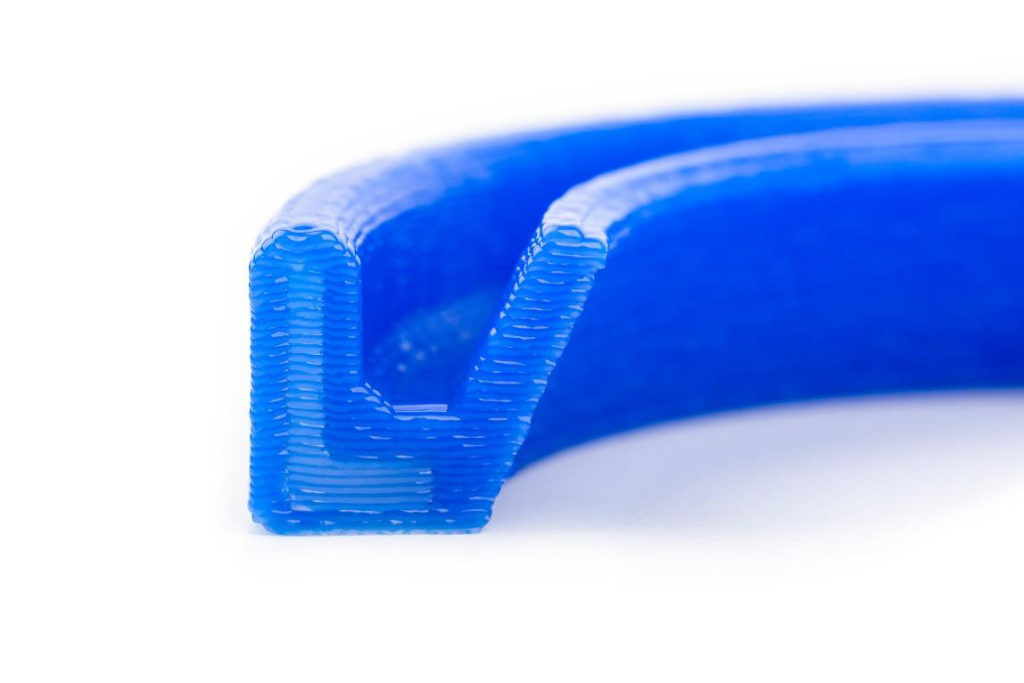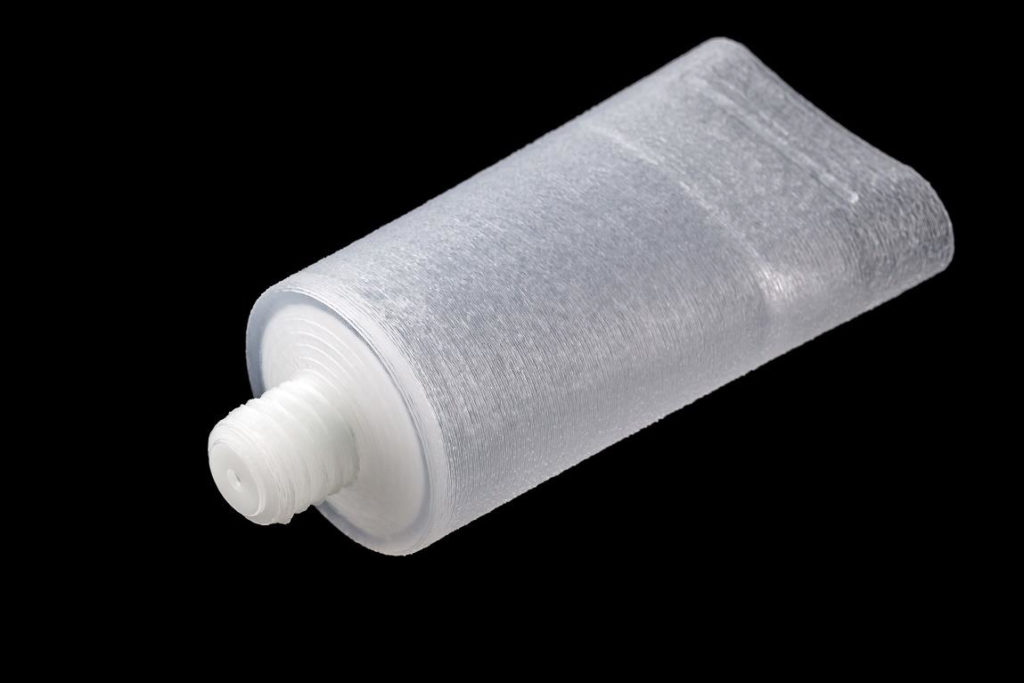Applying WACKER’s expertise in silicone to the world of 3D printing, ACEO was launched in 2017 with one of the few 3D printing services specialized in producing elastomeric parts. Now, the subsidiary of the chemical giant has expanded its technology to combine both soft silicone and hard materials in a single print.
With ACEO’s industrial 3D printers, it’s possible to 3D print up to four materials, including support. The company offers a variety of silicones with a range of properties, including differences in shore hardness, UV resistance, thermal stability, and sterilizability. In 2018, electrically conductive silicone was added to its multi-material 3D printing portfolio to enable flexible sensors and other applications.
By partnering with DELO Industrial Adhesives, ACEO is now offering an epoxy thermoset material that makes it possible to combine soft silicone and hard epoxy materials. The materials do not adhere together, meaning that it is necessary to mechanically fix the two substances together for part integrity. However, it also means that the materials can be easily separated after use. DELO was in 3D printing news recently through a partnership with Infotech, which has launched its own line of 3D printers using DELO materials.
ACEO suggests that “silicone applications can be made stronger by adding epoxy reinforcements or protective sections, and designers can add functionality by adding tough connector parts.” For epoxy-focused developers, “engineers can now make hard products safer by designing soft interfaces, they can provide flexibility by adding hinges or dampening by adding spring elements and so on.” ACEO highlights the fact that, by combining multiple materials into a single print, production can be simplified, as complex assembly operations can be avoided.

Seal ring with silicone on the outside (blue) and epoxy on the inside (L-structure). (Image courtesy of WACKER)
As discussed elsewhere, silicone 3D printing severely underrepresented in the industry, with ACEO representing the largest provider of silicone 3D printing. Instead, those interested in 3D printing flexible parts typically must rely on inkjetting, powder bed fusion, vat photopolymerization or material extrusion of an elastomeric, but non-silicone material. This may be acceptable for form and fit prototyping, but materials such as thermoplastic polyurethane do not offer the same chemical resistance, temperature stability, and resistance to ultraviolet light as silicones. In turn, they may not be suitable for the same applications, such as the production of sterilizable medical parts.
ACEO continues to expand its offerings through its 3D printing service, but one wonders when the next big leap in silicones will occur. Perhaps Spectroplast will become the leading competition to ACEO, but it doesn’t have the same heavy backing as ACEO does with WACKER. There may not be enough interest in 3D printing silicones at the moment to really expand the market, but maybe it will take the sale of industrial silicone 3D printers to really drive this small segment forward.
Subscribe to Our Email Newsletter
Stay up-to-date on all the latest news from the 3D printing industry and receive information and offers from third party vendors.
You May Also Like
InfinitForm Comes out of Stealth with AI Co-pilot for Manufacturing Design
As manufacturing goes digital, new software tools are proving to be the key to streamlining the connection between users and advanced manufacturing hardware. Whether that is artificial intelligence (AI) for...
3D Printing Webinar and Event Roundup: April 21, 2024
It’s another busy week of webinars and events, starting with Hannover Messe in Germany and continuing with Metalcasting Congress, Chinaplas, TechBlick’s Innovation Festival, and more. Stratasys continues its advanced training...
CDFAM Returns to Berlin for Second Annual Symposium
The second CDFAM Computational Design Symposium is scheduled for May 7-8, 2024, in Berlin, and will convene leading experts in computational design across all scales. Building upon the first event...
BMW Targets WAAM 3D Printed Test Parts for Vehicles Next Year
The BMW Group has long been a user and innovator in additive manufacturing (AM) technology, dating back nearly 35 years. Nevertheless, the auto giant never fails to impress in the...


































